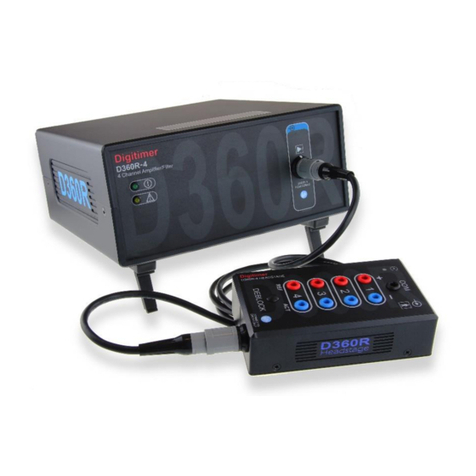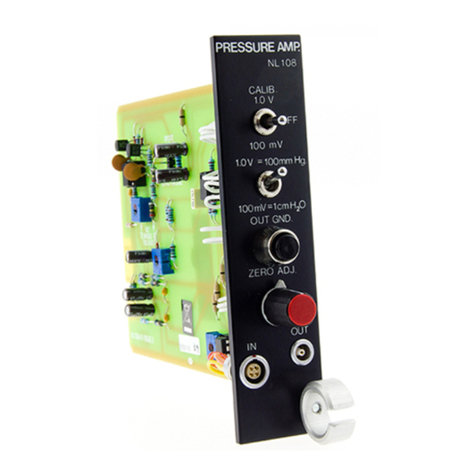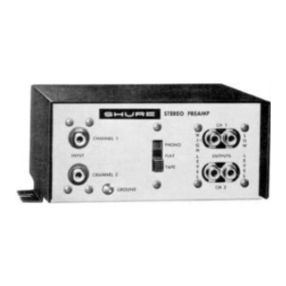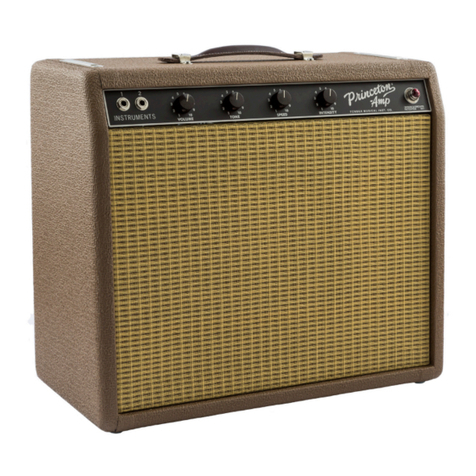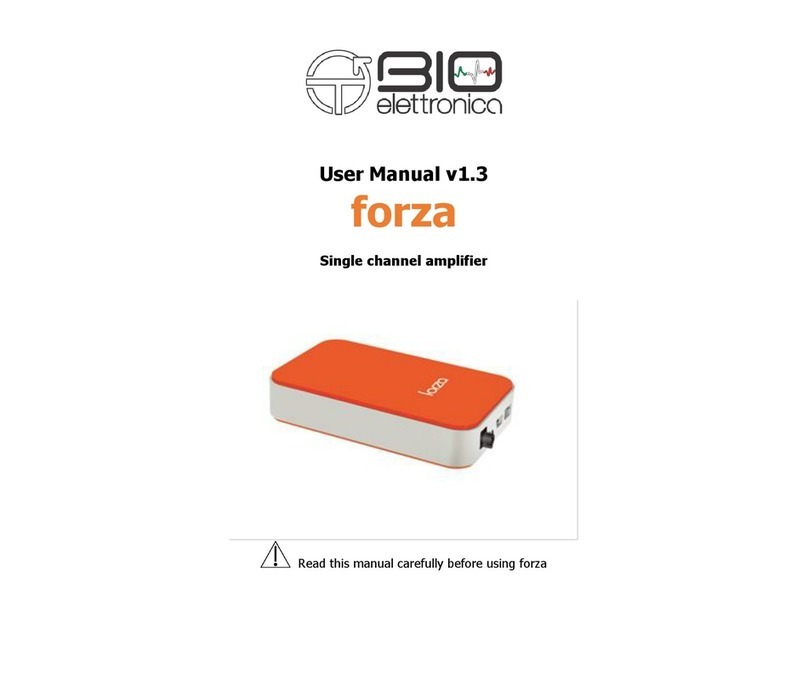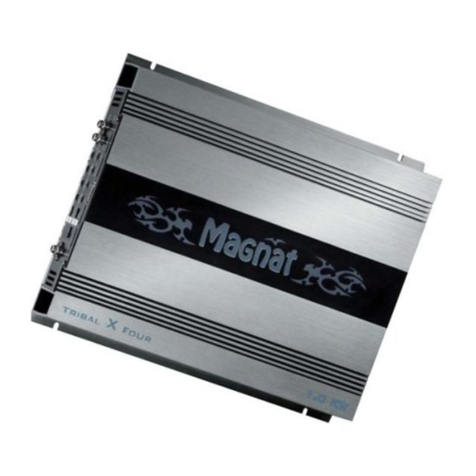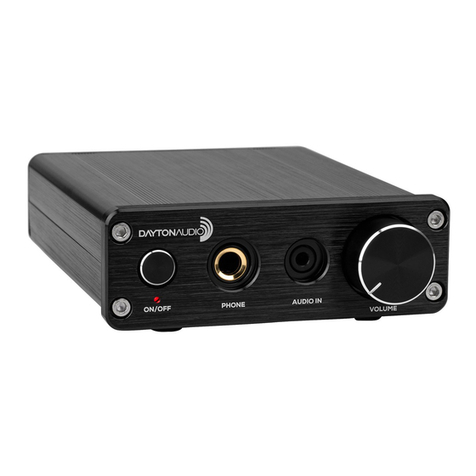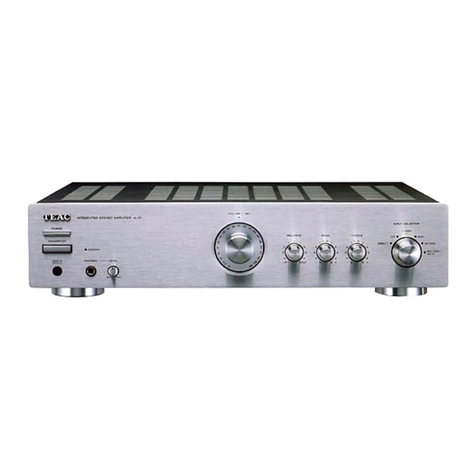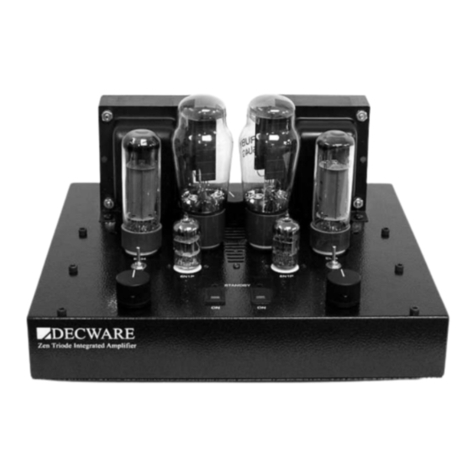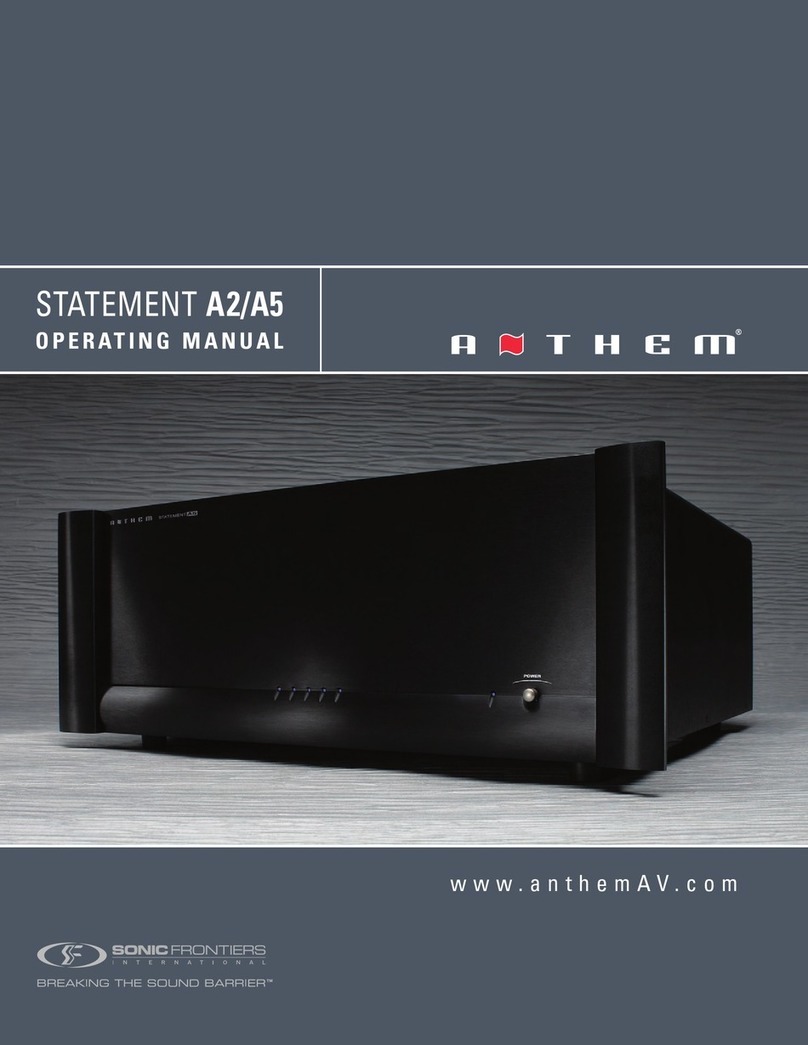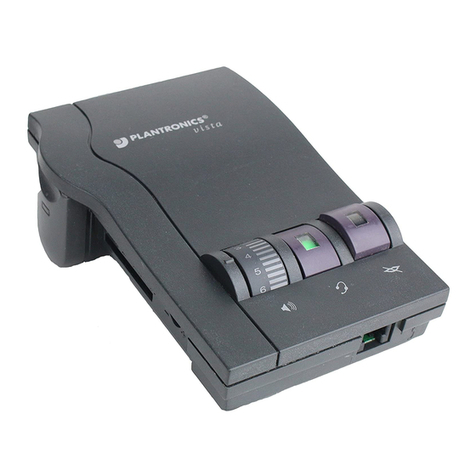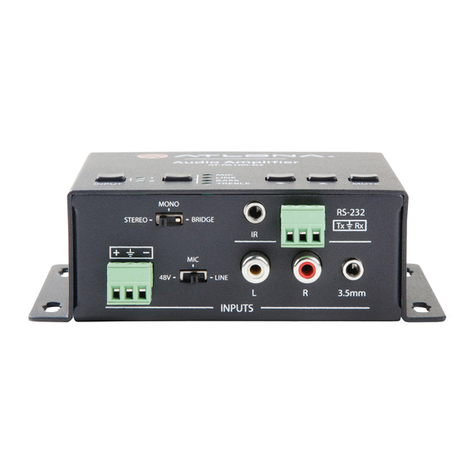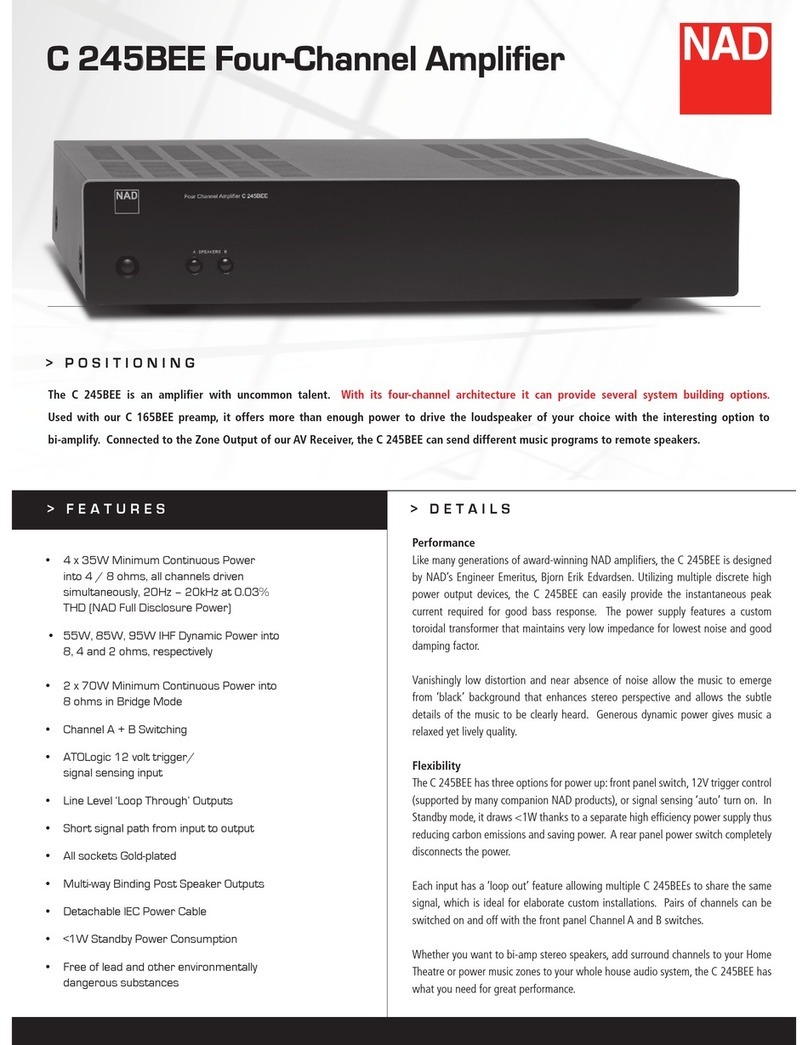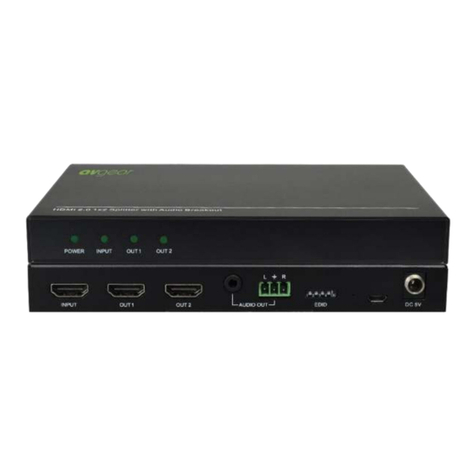Digitimer NeuroLog NL822 User manual

NL822 - 2-Channel AC Pre-Amplifier
NL824 - 4-Channel AC Pre-Amplifier
Multi-Channel,ACcoupled,MiniatureLowNoiseAmplifiers
Introduction
The NL820A ISOLATOR is the module at the heart of the NeuroLog™ System Isolated Amplifier range of
components that meet, or exceed, the BS5724 and IEC601-1 patient leakage specifications.
The NL822 and NL824 miniature, low-noise, AC coupled (or NL832/834 DC) pre-amplifiers complete the
system.
General Description
The NL822 and NL824 units are low noise differential AC pre-amplifiers with simple three step control of gain
and low frequency cut-off point. High frequency response extends to 30kHz and no control of cut-off point is
provided. The designs provide high common mode rejection of signals from DC to frequencies in excess of
1kHz.
The NL822 AC Pre-Amplifier provides two differential amplifier channels with a common terminal and a
built-in 100 microvolt calibration signal.
The NL824 AC Pre-Amplifier has four differential amplifier channels referenced to a common terminal with
100 microvolt calibration facility.
Both units have a mute facility for suppression or reduction of overload artefact signals. This can either be
operated by a push button on the front panel or, when used with the NL820A ISOLATOR, triggered from an
electrical signal to provide an automatic mute feature.
Power supply to either unit will normally be provided by an isolated supply system within the NeuroLog
NL820A ISOLATOR module from supply rails of +13 volts nominal. A 9-way plug fitted to a three metre length
of cable provides for supplies, channel outputs and remote mute control.
Stand-alone use
The NL822 and NL824 will operate from DC supplies in the range +10V to +15V but it must be remembered
that the unit will not isolate the signals unless a specific isolation stage is used.
Users Manual NeuroLog™ System NL822/824
Digitimer Ltd Page 1of 4Copyright © 1992-8
NL824
MUTE
CAL
Digitimer Ltd
COM
10Hz
3Hz
30Hz
x100
x1K
x10K
12COM
10Hz
3Hz
30Hz
x100
x1K
x10K
34
NL822
MUTE
CAL
COM
12
x100
x1K
x10K
10Hz
3Hz
30Hz
10Hz
3Hz
30Hz
x100
x1K
x10K
Digitimer Ltd

Specification
Gain
x100, x1000, x10,000 selected by 3 position toggle switch each channel separately adjustable. When used
with the NL820A module with its 1:2:5 sequence gain control the full range covered will be x100 to x50,000 in
9 steps i.e. 10mV/V to 20µV/V.
Low Frequency
These amplifiers are AC coupled to remove electrode potentials and selection by 3 position toggle switch
provides 3Hz, 10Hz and 30Hz cut-off frequencies. The amplifiers will operate with dc input differential voltages
up to 200mV from the electrodes and common mode voltages in excess of 1 volt without affecting their AC
performance.
Input Impedance
100M ohms each input to common.
Common Mode
The differential inputs provide a rejection ratio greater than -80dB (10,000:1) for frequencies up to 1kHz. Note
when used with the NL820A ISOLATOR module signals present between mains ground and the NL822/824
input system are further reduced to give common mode rejection ratios greater than -120dB.
High Frequency
No adjustment of high frequency range is provided, the -3dB point is greater than 30kHz. When used with the
NL820A module the overall system response reduces, but the -3dB is still greater than 10kHz. For adjustable
bandwidth control the NL125/126 filters can be connected to the NL820A outputs.
Noise
When operated with inputs short circuited, over the full 30kHz bandwidth the noise is less than 5µV RMS. The
low frequency noise from 3-100Hz is less than 1.5µV peak to peak.
Deblock/Mute
Operated by manual push button or remote logic trigger control through the NL820A. May be used to inhibit
stimulus artefact effects - mute time adjustable over the range 1-10 milliseconds.
Calibrate
A square wave pulse is available from a front panel socket of 100µV amplitude at approximately 160Hz.
Connection
The amplifier channel inputs are 2mm sockets coloured red and blue to indicate relationship between input and
output as follows. A positive input at the red socket will produce a positive output, a signal at the blue input will
be inverted. The common signal return socket is coded black. Where a single ended input signal is to be
amplified, then the un-used input (red or blue) socket should be linked to the common black socket.
Calibration
The 100 microvolt calibrate signal can be connected to any amplifier channel by linking from the calibrate
socket to the appropriate red or blue input socket. The other input should be connected to the COMMON
socket.
Users Manual NeuroLog™ System NL822/824
Digitimer Ltd Page 2of 4Copyright © 1992-8

Connection
Fig. NL822-1 illustrates the output and supply connections provided via the 9-way plug to a matching socket.
Normally when used with the NL820A ISOLATOR module the correct connections are made by inserting the
plug into the socket.
The NL824 provides channels through to outputs 1-4 on the NL820A.
The NL822 connects channels 1 and 2 to outputs 1-2. A "T" adaptor (Part No. NL969T) is available for
connecting two NL822 amplifiers to a single NL820A to drive outputs 1-4.
The information provided on Fig. NL822-1 will therefore only be required if an NL822 or NL824 is to be used
without the NL820A in which case one, or more, matching socket(s) must be ordered (Part No. NL969S).
Pin No. Function
1Channel 1
2Channel 2
3Common
4+13V
5-13V
6Common
7Channel 3
8Channel 4
9Mute
Fig. NL822-1
Operation
The NL822 and NL824 amplifiers are suitable for amplifying low level AC signals in the presence of large
interference potentials from mains supply sources and DC potentials generated by electro-chemical action at
electrode interface connections. They are particularly suitable for electro-physiological measurements, however
it is still important that care is taken over input connections and wiring layout.
When recording differentially, electrode leads should be run close together and where possible twisted.
Connection impedances should be as low as possible since although the amplifiers present a high input
impedance, both noise and common mode rejection of power source interference will deteriorate with increased
signal source impedance.
Similarly although the amplifiers are AC coupled there is a limit to the magnitude of any DC potential which can
be applied to the input terminals without producing limiting effects on the signal. Accordingly good quality
matched electrodes should be used to minimise these potentials.
Switch setting of gain and low frequency cut-off point are clearly marked on the front panel and can be adjusted
by the user as required to suit the application. The sensitivity of any channel can easily be checked by
connecting either input socket to the 100 microvolt calibrate socket whilst linking the un-used input socket to
common.
When used with the NL820A ISOLATOR module the amplifier inputs are separated from ground by the isolation
barrier existing within the NL820A. It is therefore important if this safety feature is to be preserved that
accidental grounding of the input circuit is avoided.
The mute push button on the front panel provides for rapid resetting of the amplifier coupling components to
minimise blocking effects following large "artefact" signals. It can also be operated immediately prior to any
expected disturbance or external stimulus and will suppress the output whilst the button is held depressed.
87
6
5
4
3
29
Users Manual NeuroLog™ System NL822/824
Digitimer Ltd Page 3of 4Copyright © 1992-8

Electrical operation of the mute facility is available via the NL820A module to maintain isolation of the amplifier
inputs from the logic signal and ground. See the NL820A section of this manual for further details.
Some applications will require reduction of the amplifier bandwidth to enhance the signal/noise ratio. Generally
this requirement will be satisfied by reducing the high frequency response of the system. The filtering required
will vary with application and has not been included in the NL822 or NL824 amplifiers in order to maintain small
size. Where the system includes the NL820A and the NeuroLog™ rack, the NL125 or NL126 can be used to
give comprehensive continuous control of upper and lower frequency cut-off points. Low frequency cut-off is not
usually required to be finely adjustable over such a large range and therefore in most applications the three
step control switches provided for each channel will be adequate.
Multiple System
Two channel and four channel amplification requirements are covered by NL822 and NL824 units provided the
input signals are relative to a common point with less than 1 volt common mode potential. If measurements are
to be made from differing potential points then isolation will be required between these points and an NL820A
signal and supply isolator will be required to operate amplifiers from each point. For example two channels
referenced to point A and four channels referenced to point B. Potential between common points A and B 240V
50Hz.
Solution - One NL822 and one NL820A for point A system
- One NL824 and one NL820A for point B system
Where more than four channels are required, even though all are referenced to the same point, multiples of
NL822 and NL824 units will be required and if isolation is required then one NL820A will be required for each
group of four channels.
Dimensions
Size: NL822- 70 x 60 x 110 mm (W x H x D)
NL824- 90 x 60 x 155 mm (W x H x D)
Lead length: 2.5m (nominally)
Last Revision: March 4, 1998 First Issued: before July 1984
File Reference: N:\DOCS\COMPANY\MANUALS\NEUROLOG \ NL822824.SAM
Users Manual NeuroLog™ System NL822/824
Digitimer Ltd Page 4of 4Copyright © 1992-8
This manual suits for next models
1
Table of contents
Other Digitimer Amplifier manuals
